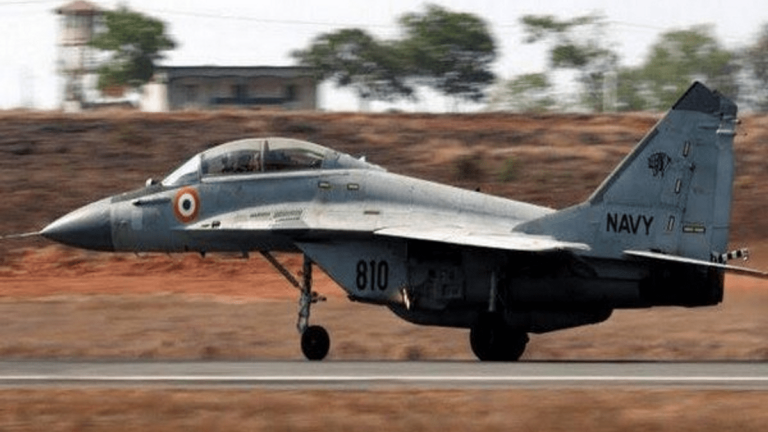SOURCE: THE PRINT

The crash of the Indian Navy’s MiG-29K aircraft Thursday has yet again put the spotlight on the Russian fighter jet that has had a troubled history, both in India and in its home country.
The navy’s MiG-29K was on disembarkation (flying back to its base, INS Hansa in Goa) from the aircraft carrier INS Vikramaditya. While one pilot was rescued Thursday, Commander Nishant Singh, a qualified flying instructor, remains missing.
The navy has begun an inquiry into the aircraft crash, which is the third one to have been involved in an accident in the past year starting last November. Navy sources refused to get into the likely cause of the accident but added that no warning sign or alarm was raised by the pilots on board.
India has imported 45 MiG-29K fighters jets from Russia, but operates less than two dozen of them — the rest are kept as war reserves and in other forms.
Troubled past for MiG-29K
On 23 February this year, a MiG-29K crashed after being hit by birds over Goa. The pilots managed to steer the jet away from habitation and ejected to safety.
On 16 November last year, a MiG-29K trainer aircraft crashed outside Verna village in South Goa district after both engines failed. Another aircraft was badly damaged after it had veered off the runway while taking off from INS Hansa in 2018.
But the problem exists not just for India. In 2016, a Russian MiG-29K fighter jet had crashed into the Mediterranean Sea as it tried to land on the Admiral Kuznetsov aircraft carrier. It was reported that the aircraft appeared to have mechanical difficulties shortly after take-off.
CAG had flagged faults
The aircraft, which was inducted after an over $2 billion deal for these fighters in 2010, has seen multiple operational deficiencies in its engines, airframe and fly-by-wire system.
The Comptroller and Auditor General of India had, in its 2016 report, observed that “the MiG-29K, which is a carrier-borne multi-role aircraft and the mainstay of integral fleet air defence, is riddled with problems relating to airframe, RD MK-33 engine and fly-by-wire system”.
One of the main concerns was the aircraft’s engine, which navy sources insist has since been taken care of.
The CAG audit observed that as of September 2014, a total of 65 engines (42 with 21 aircrafts and 23 spares) had been acquired. However, since its induction in February 2010, 40 engines (representing 62 per cent of 65 engines) had been withdrawn from service/rejected due to design related defects/deficiencies.
“The issue has serious flight safety implications, since in-flight engine defects had led to ten cases of single engine landings,” the CAG report had noted in 2016.
Navy says addressed issues but ‘problems persist’
In 2018, then Navy Chief Admiral Sunil Lanba had said that issues related to maintenance and availability of spare parts for the MiG 29K fleet had been addressed.
Navy sources, however, indicated that some of the problems still persist. They added that the aircraft faced engine issues mainly due to high salt and sand intake.
Experts said that the cause of the accident cannot be determined until the inquiry is completed.
“This accident took place soon after the successful high tempo operations during Malabar 2020,” former navy spokesperson Captain D. K. Sharma said. “And hence this kind of a mishap is baffling. More so, this involved a top notch pilot. It is a matter of serious concern about what has gone wrong.”
INS Vikramaditya took part in the recently concluded Malabar naval exercise involving the Quad countries – India, Japan, the US and Australia.
When asked about the lack of a Mayday call from the aircraft, Captain Sharma said, “We should leave it here as an abstract. Let the inquiry find out.”
Aviation experts added that similar problems were faced by all navies across the world due to the metallurgy of the aircraft.
“The aircraft has had issues and there is no doubt about it,” Air Vice Marshal Manmohan Bahadur (retd) and Additional DG, Centre for Air Power Studies, a think-tank said.
Asked about the constant engine issues due to sand and salt, Bahadur said it was a common problem due to the environment and exists for all aircrafts doing coastal and offshore flying.
“It is a problem that will be faced by the American Navy and the Marines, and they conduct extensive over-sea operations,” he said. “This is where the aircraft design, metallurgy and engine technology come into play. These are crucial issues that determine reliability and availability of aircraft on the flight line.”






